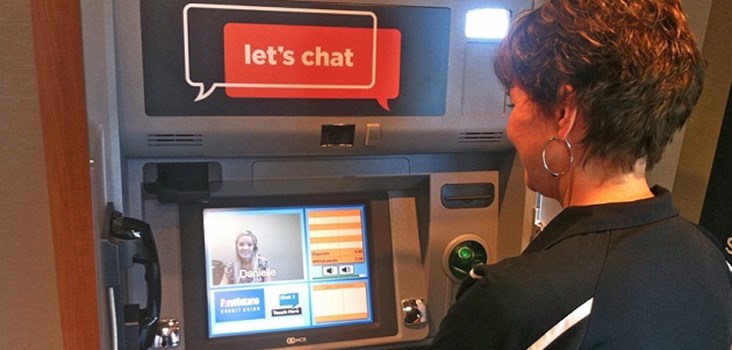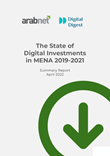
Today the banking industry is buzzing with innovations that are driving the industry into the digital age. The evolution of mobile banking, payments, mCommerce and the branch, is pushing banks to reinvent themselves and think about how they can better connect with an increasingly tech savvy customer. In the midst of all the disruptive turmoil faced by banks is the impressive growth of video consumption over the web.
Most bankers are still not aware that YouTube now ranks second, only after Google, when it comes to searching the internet. This little known fact is important because it indicates the mindset of consumers nowadays, and illustrates that people want to ‘see and hear’ about products and services before they make the decision to acquire them. Given the ignorance of this fact, it is therefore not surprising to see how most banks are not exploiting this medium to differentiate themselves in such a competitive industry. In this article, I will talk about two key areas of ‘video’ that banks must focus on if they are to remain relevant in an ever connected world.
Video Chat for Engaging with Existing Customers
The branch has long been the cornerstone of the retail distribution model, and continues to be a prominent factor in the operating costs of most banks. It is no surprise that banks often debate the need for the branch and the role it will play in the future. Branches are currently going through a digital shakeup; we often hear of new branch designs and interactive technologies that are helping to reinforce the customer relationship and move away from transactional services. As consumers have adopted internet and mobile banking to execute their everyday banking needs, they have needed the branch less and less (on average, once or twice a year!), and it is no surprise that many banks are actively looking to rightsize their branch network. With less direct contact with their customers, banks are faced with the challenge of maintaining the ‘relationship’ with the customer and not become commoditized.
The problem is further exacerbated when you consider that the diversity and nature of visits to the branch mean that banks are struggling to provide skilled staff who are able to deal with such a broad range of advisory services. For instance, a branch staff member may be very capable of helping a customer with an account enquiry, or applying for a personal loan, but will typically not have the knowledge to give advice on investments, or provide a detailed understanding of a whole life insurance plan. It is when such specialist advice is needed that video comes into its own, and allows the branch to service a customer through personal video chat with a qualified advisor.
Although video conferencing is widely available to the general public, and most are familiar with the likes of services such as Skype or FaceTime, it is still slow in being adopted by banks as a means to centralizeg skilled resources across a wide geographic branch network. The services of the ITM (Interactive Teller Machine) and dedicated Video Chat booths in branches should be slowly making their way into everyday banking near you.
Banks like Mashreq, have made video chat booths available in their branches, and in particular the ATM area outside of the branch in a bid to make themselves available to customers 24/7. Not content with just making this service available at a physical branch location, Mashreq has even gone so far as to enable video chat facilities through its online banking website so that customers have the service from the comfort of their own home. Much like the MAYDAY button launched by Amazon, the ability to video chat with the bank is transforming the ‘face to face’ engagement that the bank offers its customers. The result: customers who are not happy to frequently visit the branch still feel engaged and valued by the bank, and take comfort in knowing that a voice (and a face too) is always available when they need it.
Elsewhere, we see the approach taken one step further. The evolution of video-based advice has taken shape in banks like ASB bank, who offer video chat facilities through their Virtual Branch available on their Facebook site. The long and short of it is that if you are a bank and you’re not at least experimenting with a video chat service channel, you should be.
Video Chat for Engaging with Prospective Customers
So whilst video chat can help banks in engaging and servicing existing customers, we now turn to how it can help with prospective customers. It is a well-documented fact that video increases interest and engagement with consumers by more than 20X that of traditional text and images on websites, and is now accessed on smartphones more than any other content on the net. A quick look at the rise of YouTubers who provide video-based advice gives valuable insight into the potential for banks.
Modern day celebrities like PewdiePie have captured enormous subscriber bases on YouTube, and now consistently outperform viewing numbers from traditional providers like CNN. The loyalty that these celebrities have attained from their subscriber base reiterates the power of trust in what they say and the importance of advocacy on social media.
Many banks today still dedicate very little of their marketing budget to digital channels, and even less on video content production. Historically, the challenge of video content has been the cost associated with its production, and the time and effort required to develop professional grade videos. This industry challenge is fast becoming another disrupted market, and we are at the early stages of seeing video production become very affordable. New websites like Wooshii and MakeWebVideo are already offering solutions to businesses for producing affordable, high quality video content. The result over the next few years will be that banks can now begin to produce video product ands catalogues which can be used on their websites, on smartphones and tablets, and in their digital branches to better communicate with consumers.
Furthermore, the use of simple video content can be used to aid in the migration to digital channels for common transaction services. Banks can begin to build a ‘Video FAQ’ that explains how you might pay your bills online, or how to transfer money to your friends via Mobile P2P through Facebook.
The possibilities for video-based marketing content are numerous. When banks begin to realize the advantage it can play in making a consumer choose Bank A over Bank B, it will get the importance it needs. Whilst such a statement will almost certainly have its skeptics amongst banking traditionalists, I would ask you to consider that if you don’t think video is important to your business now, it is the equivalent of saying in 2004 that the internet isn’t important to banking.
Latest Business
Intelligence Report













